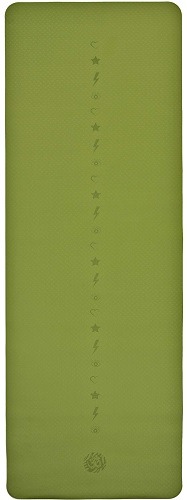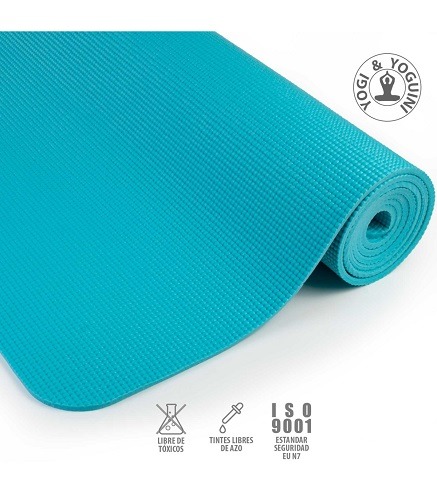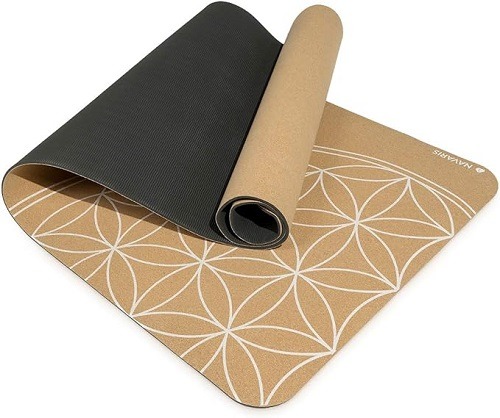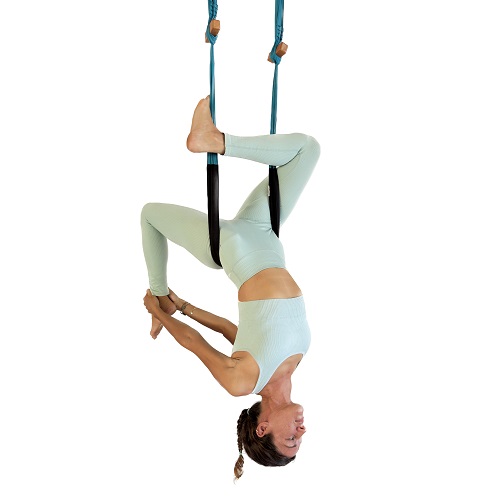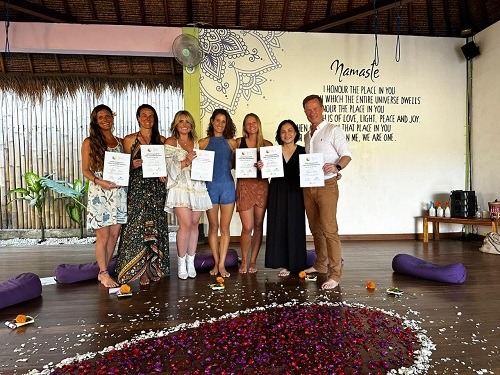Choosing the right yoga mat can make all the difference in comfort and performance during your practice.
There are a variety of options available on the market.
Knowing the different materials and characteristics of yoga mats can help you find the one that suits your needs.
Here we explore some of the most common types of yoga mats and their distinctive features:
Rubber or natural rubber:
Rubber comes from latex extracted from various species of tropical plants.
Made from biodegradable and renewable material, this mat provides excellent adhesion and durability.
Thickness: They are generally thicker than the others, providing greater cushioning for the joints.
Breathability: They have high breathability and are durable.
Flexibility and weight: They are flexible and relatively heavy, since the material is denser.
Moisture absorption: Some rubber can retain moisture, so it can become slippery if you sweat a lot.
Being made of organic material, they are an environmentally friendly option.
However, some people may be sensitive to the natural smell of rubber or allergic to latex, which is a reason to avoid them.
PVC:
These types of mats, being made of synthetic material, are widely available and are generally cheaper.
Thickness: There is a wide variety of thicknesses, but they are generally thicker.
Breathability: They are not very breathable and when you sweat, they can become very slippery.
Durability: Durable and wear-resistant, due to the synthetic material.
Flexibility and weight: Flexible but heavier than TPE.
Moisture absorption: They do not absorb moisture, making cleaning easier.
PVC mats are very durable and easy to clean, which is why yoga schools frequently choose them.
TPE (Thermoplastic Elastomer):
It is a latex-free combination of rubber and plastic used in yoga mats.
They offer good cushioning, are lightweight and slip resistant.
Thickness: They come in different thicknesses, from thin to thicker.
Breathability: They are breathable and thanks to their synthetic component they do not retain odors or bacteria grow in them.
Durability: Resistant to wear and tear.
Flexibility and weight: They are light and flexible.
Moisture absorption: Good absorption and easy to clean.
It is a more elastic material than PVC and has a smaller amount of synthetic material.
Cork:
Cork is the bark of the Cork Oak, a tree from the western Mediterranean.
Being a layer of protection for the tree, cork is naturally antimicrobial.
This makes it ideal for preventing the build-up of bacteria and odors.
Additionally, it provides a soft but grippy surface for yoga practice.
Thickness: They are usually thinner.
Breathability: They are quite breathable.
Durability: Less durable than synthetic options.
Flexibility and weight: Flexible and light.
Moisture absorption: They absorb moisture and are non-slip.
Remember that choosing a mat depends on your personal preferences, practice style, and individual needs.
Choose the one that best suits you!


